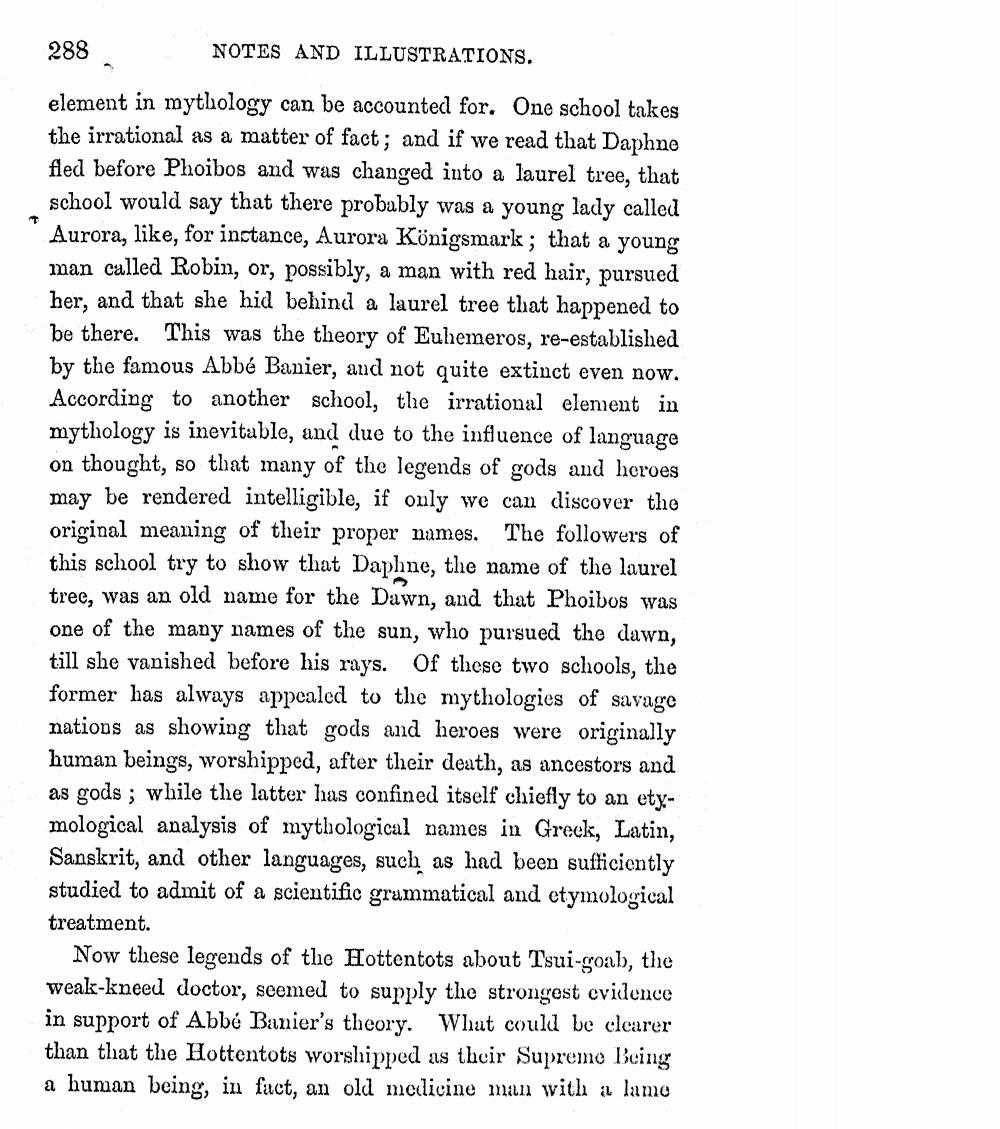________________
288
NOTES AND ILLUSTRATIONS.
element in mythology can be accounted for. One school takes the irrational as a matter of fact; and if we read that Daphne fled before Phoibos and was changed into a laurel tree, that school would say that there probably was a young lady called Aurora, like, for inctance, Aurora Königsmark; that a young man called Robin, or, possibly, a man with red hair, pursued her, and that she hid behind a laurel tree that happened to be there. This was the theory of Euhemeros, re-established by the famous Abbé Banier, and not quite extinct even now. According to another school, the irrational element in mythology is inevitable, and due to the influence of language on thought, so that many of the legends of gods and heroes may be rendered intelligible, if only we can discover the original meaning of their proper names. The followers of this school try to show that Daphne, the name of the laurel tree, was an old name for the Dawn, and that Phoibos was one of the many names of the sun, who pursued the dawn, till she vanished before his rays. Of these two schools, the former has always appealed to the mythologies of savage nations as showing that gods and heroes were originally human beings, worshipped, after their death, as ancestors and as gods; while the latter has confined itself chiefly to an etymological analysis of mythological names in Greek, Latin, Sanskrit, and other languages, such as had been sufficiently studied to admit of a scientific grammatical and etymological treatment.
Now these legends of the Hottentots about Tsui-goal, the weak-kneed doctor, seemed to supply the strongest evidence in support of Abbé Banier's theory. What could be clearer than that the Hottentots worshipped as their Supreme Being a human being, in fact, an old medicine man with a lamo




